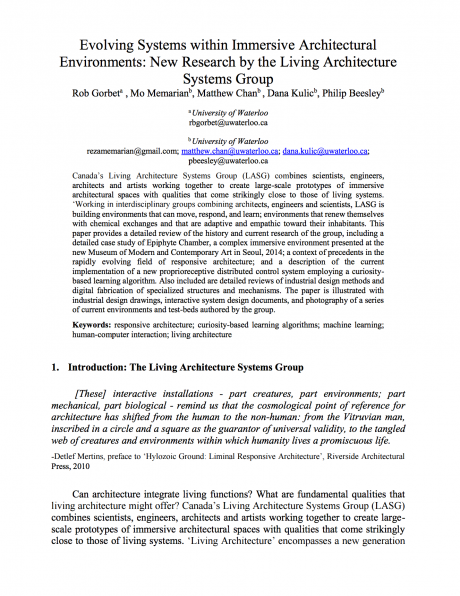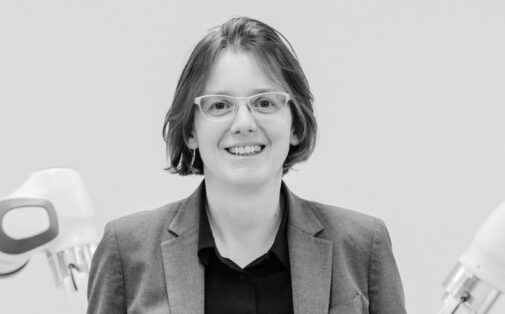Evolving Systems within Immersive Architectural Environments
New Research by the Living Architecture Systems Group
By Rob Gorbet, Mo Memarian, Matthew Chan, Dana Kulic, and Philip Beesley
“Canada’s Living Architecture Systems Group (LASG) combines scientists, engineers, architects and artists working together to create large-scale prototypes of immersive architectural spaces with qualities that come strikingly close to those of living systems. ‘Working in interdisciplinary groups combining architects, engineers and scientists, LASG is building environments that can move, respond, and learn; environments that renew themselves with chemical exchanges and that are adaptive and empathic toward their inhabitants. This paper provides a detailed review of the history and current research of the group, including a detailed case study of Epiphyte Chamber, a complex immersive environment presented at the new Museum of Modern and Contemporary Art in Seoul, 2014; a context of precedents in the rapidly evolving field of responsive architecture; and a description of the current implementation of a new proprioreceptive distributed control system employing a curiosity-based learning algorithm. Also included are detailed reviews of industrial design methods and digital fabrication of specialized structures and mechanisms. The paper is illustrated with industrial design drawings, interactive system design documents, and photography of a series of current environments and test-beds authored by the group.”
Rob Gorbet, Mo Memarian, Matthew Chan, Dana Kulic, Philip Beesley
Appears in NGB#2: Info-Matter, in press 2016 Editor: Nimish Biloria [Hyperbody – TU Delft]
Co-editor: Matias del Campo [Taubman College – University of Michigan]



